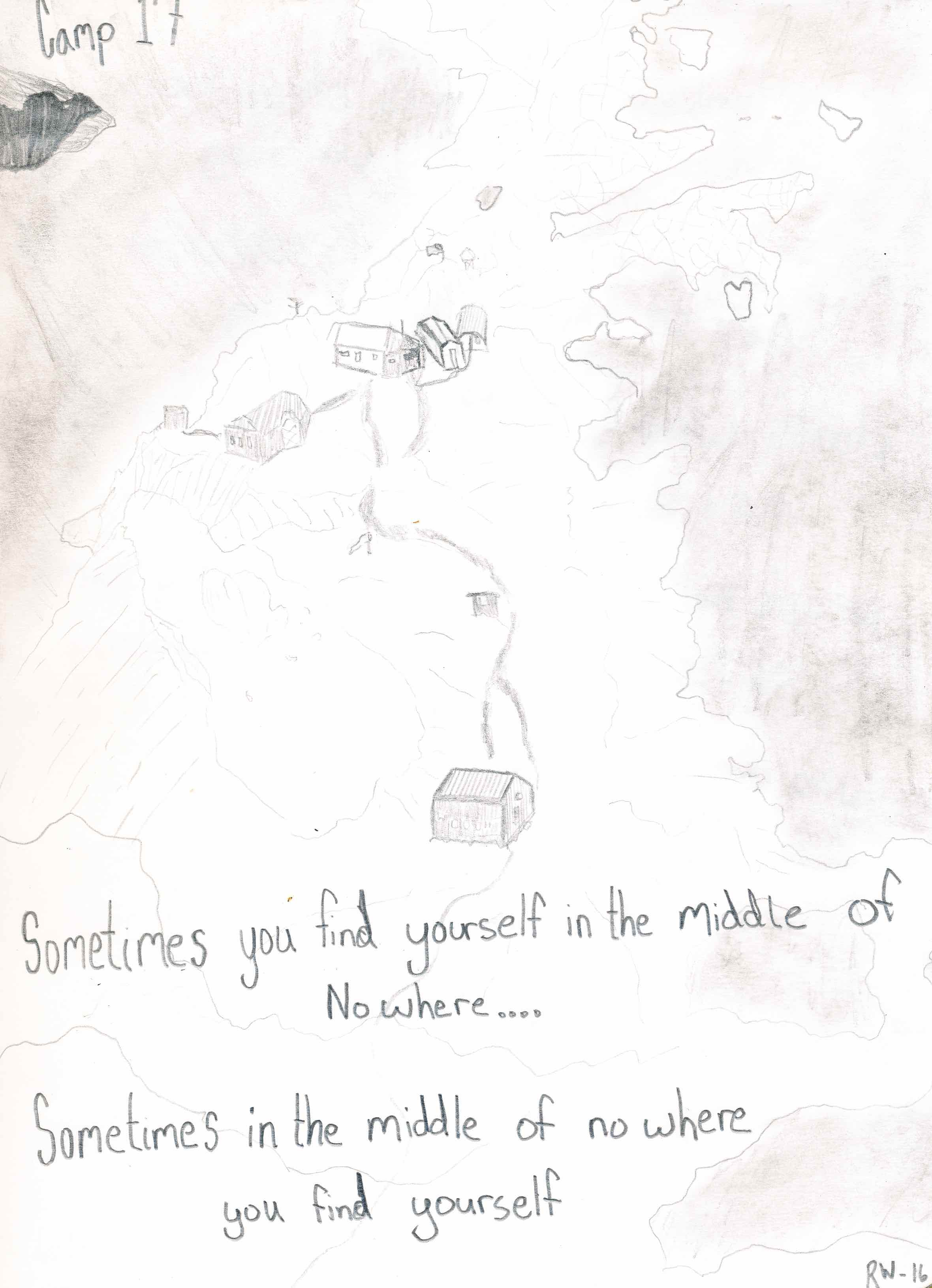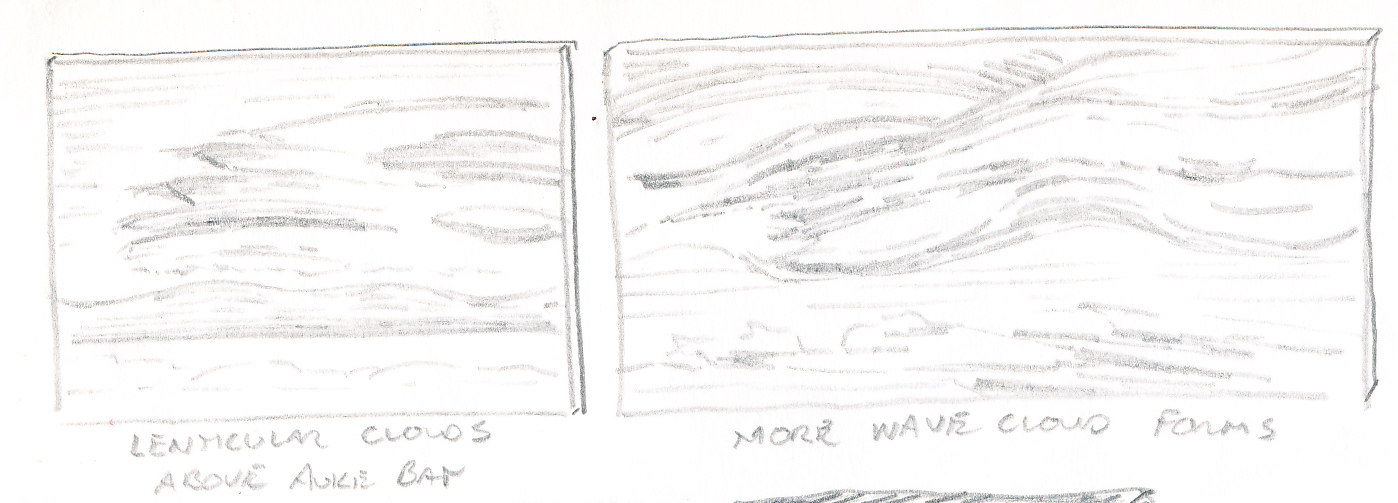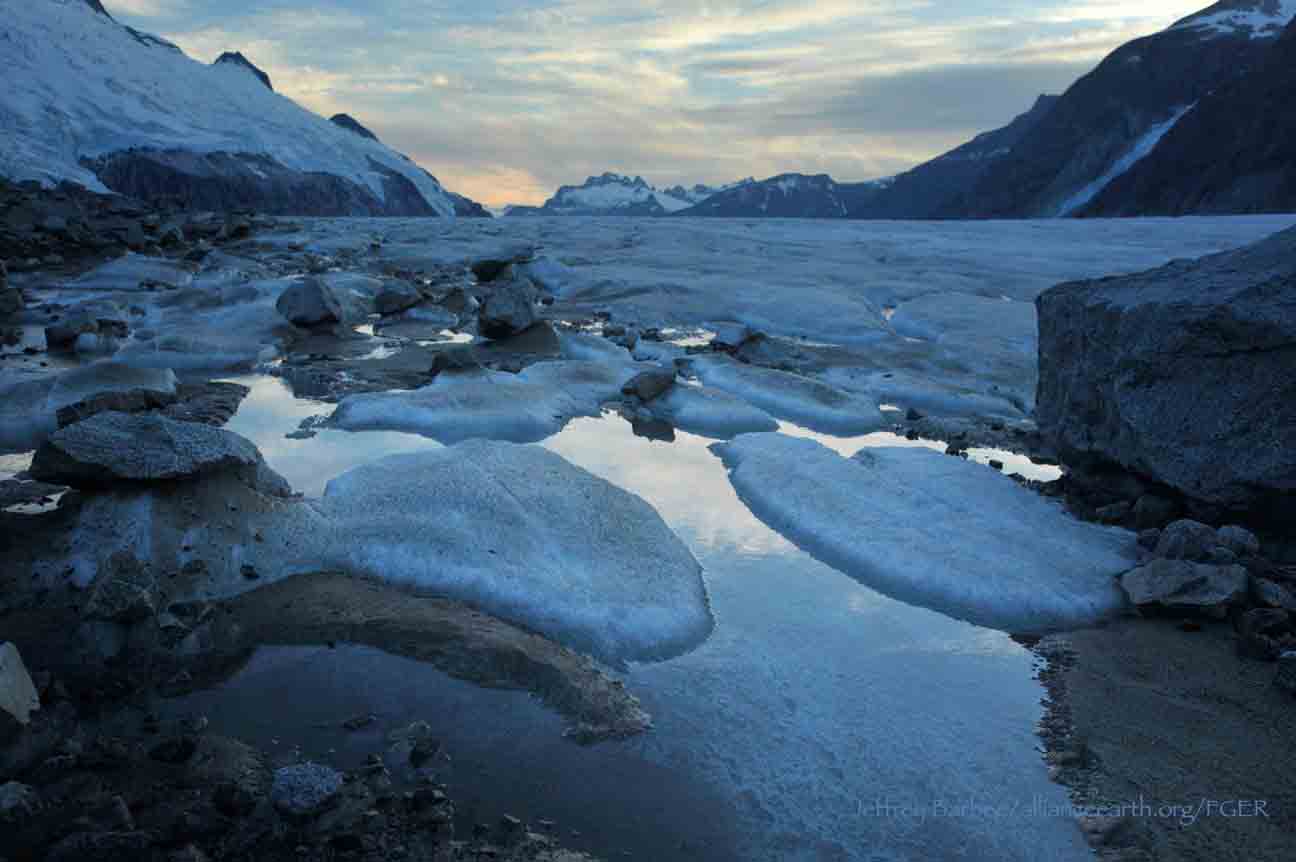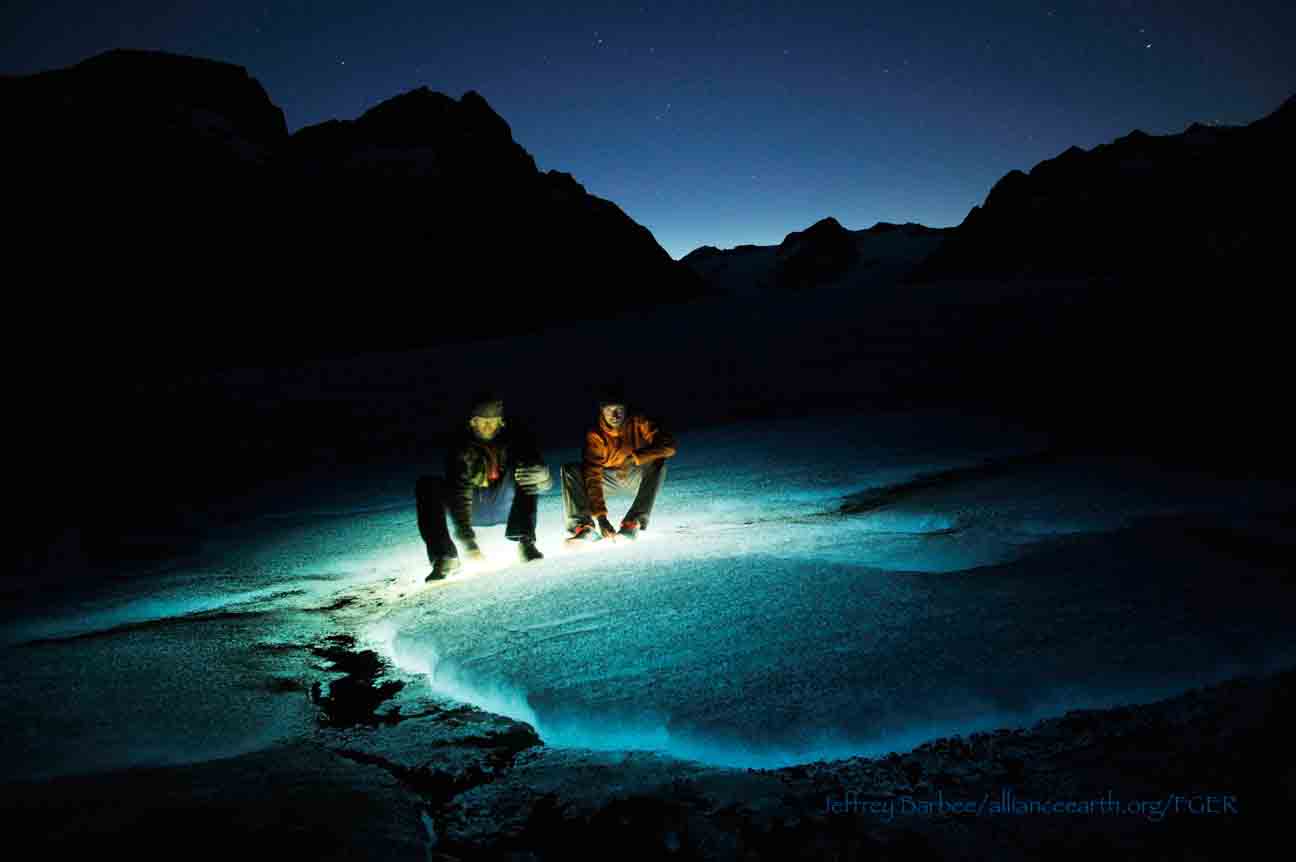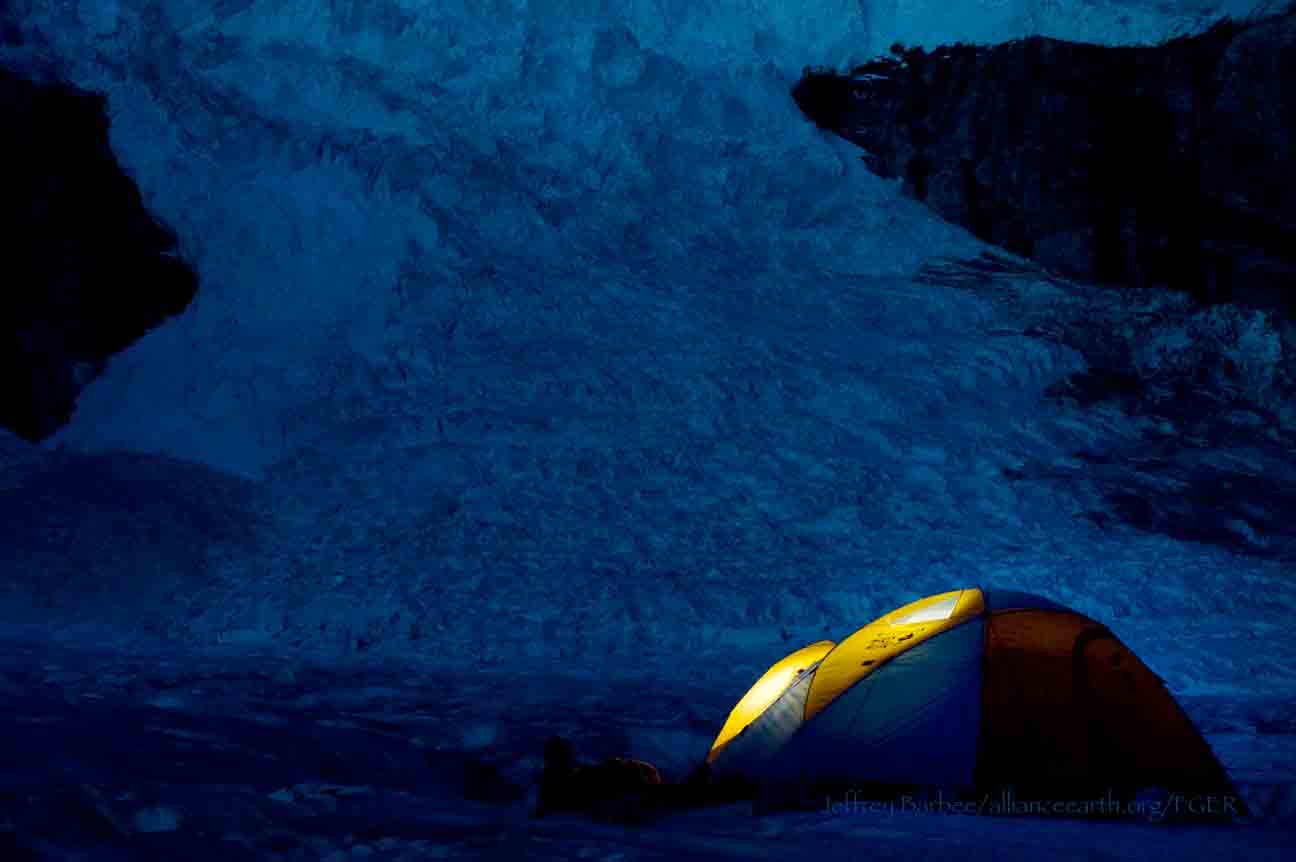By Molly Wieringa, Harvard University
*Here on the icefield, roughly sixty people need to be fed at least three times each day. To meet this demand, students pull duty as cooks from our first camp to the final days of the program. Each crew consists of three students who will band together and support one another through some of the longest, busiest days of the summer. I have here attempted to capture some of the insanity inherent to being a cook at a JIRP camp.
†all times are approximate
06:00- You’ve been awake for at least 15 minutes, and depending on where you sleep, you’ve picked your way across camp to the cook-shack. If you weren’t caffeine dependent before JIRP, you definitely are now, so you down your first coffee of the day and shuffle into the pantry, where you spend five minutes pretending that you have an actual choice about what breakfast will be.
07:00- The water for the oatmeal you will inevitably make is still not boiling. On the other hand, the coffee percolating on the stove has bubbled over twice.
08:00- Turns out that breakfast will be slightly late. There aren’t yet enough pancakes (or fried diced Spam; to each their own) to accompany the oatmeal. You rocket around the boundaries of the kitchen, pushing oatmeal toppings onto the serving counter, collecting the knives and bowls and crumpled towels lying haphazardly on every surface, flipping off the burners in response to a query about why the cook-shack smells like gas.
08:13- The most enthusiastic (or awake) member of the crew trumpets the vuvuzela, both indoors and out, and breakfast is served.
09:00- During the camp manager’s announcements, you call seconds, promptly distracting every student and instigating a stampede, through which navigation to any place other than the serving counter is impossible.
Typical cook crew swagger on display during lunch prep, when energy is at an all-time high. Left to right: Eric, Gavin, and Bryn. Photo credit: Molly Wieringa
09:30- Welcome to Round 1 of dishes. Wash, hot rinse, bleach rinse, dry, repeat. You’ll be here for at least an hour and a half.
11:00- Break? What break? Better get started with lunch. You wander back through the pantry before deciding that making anything from scratch isn’t worth the effort, especially because at least half of the camp’s population is usually out in the field during lunch. Out the door to the refrigerators (read: snow filled coolers) you go.
13:00- The horn blows again; you’ve managed to reconstitute some combination of leftover rice, oatmeal, or soup, perhaps accompanied by canned meat or fresh-ish veggies. Hopefully, no one complains.
14:00- Maybe there are seconds, maybe there aren’t. Either way, Round 2 of dishes begins. If you’re lucky or experienced, you’ve used fewer dishes than breakfast and finish by 15:30.
15:30- Barring any major disasters, you take a nap, if you know what’s good for you. Feeding sixty people is hard work.
17:00- You’ve just woken up from what was going to be a 30 minute nap, having kissed your aspirations of academic productivity for the day goodbye. You meet the rest of the crew back in the cook-shack, theoretically “on the dot.” Regardless, it’s now time to test your mettle- dinner is when you either pass the high bar set by previous crews or tumble into culinary insignificance. The pantry awaits and your adventure fully begins. Playtime is over.
17:15- You’ve doctored a real recipe from an actual cookbook, possible only through many potentially sketchy ingredient substitutions and a (not that you’ll ever admit it) totally bogus scaling ratio. The number of pots on the stove has been increasing alarmingly.
18:00- Panic sets in briefly when you realize you’ve forgotten the vegetarian option. Another pot hits the stovetop.
18:55- Dirty dishes cover every surface- they seem to have multiplied on their own. Surely you didn’t actually use that bowl, but then why is it covered in sauce?
18:56- You scramble to move the various scattered kitchen implements to a designated area away from the serving counter, slap an ever-so-slightly snarky menu on the whiteboard, and then rush the pots and pans containing dinner onto serving trivets.
19:00- The vuvuzela sounds and the hovering hordes descend.
19:02- Realizing that the vultures previously known as your campmates are consuming food at an unheard-of rate, you panic all over again, before imposing serving sizes on each dish in the loudest voice you can manage in such a frazzled condition.
19:55- The camp assistant (a fellow student charged with helping the cook crew and the camp manager) gets up and gives a personal reflection. You then call seconds, again resulting in an impassable cook-shack.
20:10- If you’ve overestimated the amount of food, you beg your comrades to take thirds on their way to evening lecture.
20:15- The cook-shack, so hectic just moments before, now seems quiet as the grave. You sigh, blink at the mess in front of you, and steel yourself for the third, final, and most gnarly round of dishes. In order to win the favor of the masses, you’ve prepped a dessert already, and slide it into the oven before breaking out the dish soap.
21:30- Said masses, fresh from lecture, breeze through the door, carefree and laughing, as you push the dessert trays to the counter with achy muscles and prune-y hands. In a gravelly, strained voice, you urge them away from the newly clean camp bowls in favor of personal mugs. You’ve had it up to here with doing dishes.
Julian the Kitchen Troll: a representation of every cook at the end of the day. Photo credit: Molly Wieringa
22:00- During the post-dessert daze, you somehow managed to put everything away, dump the dirty dish water, and wipe down the kitchen surfaces. If you’re like this cook, you ignore the rationale of going to bed early and seek out Avery, Benjy, or Max, one of whom is probably playing guitar. Wiser cooks take this opportunity to pass out. It’s been a full 16 hour day, but one of the most gratifying in camp. As your head hits your sleeping bag, you pray for the souls of tomorrow’s cook crew, and bless the stars you don’t have to wake up early.**
**Disclaimer: despite having used a tone to the contrary, being on cook crew is usually enormous fun, and a wonderful opportunity to get to know your two fellow cooks. Ten out of ten, would recommend.*










